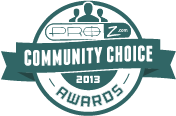 |
| Created on www.canva.com |
First things first: we are not
experts on machine translation (MT) by any stretch of the imagination, but we
certainly know that it's an incredibly polarizing topic in our industry. It is,
perhaps, the most polarizing issue we've encountered in the last 10 years--in
addition to how much we should charge for our services, of course. Now, our
lovely colleague Jost Zetzsche is, without a doubt, the expert in the subject,
and he told us about Lilt. Jost wrote about Lilt very eloquently here. Since the recommendation came
from someone we trust, we went and checked it out. For the record: MT is
integrated into many of the translation tools we use (Smartling, Wordfast,
etc.), and while most of the MT-generated suggestions for translations are
still quite giggle-inducing, MT has been getting better. As we've mentioned: we
don't know that much about MT, but we have, chosen to view it as a tool to help
translators become more efficient rather than a tool that will replace us.
Others view this very differently. Allow us to elaborate on Lilt. And you probably know this, but
let us emphasize that we have no financial or business connection to Lilt. We
just think it’s a cool tool.
We took Lilt for a spin, and here are our
findings: the program is very promising. Basically, it's a super-easy
browser-based interface, there's nothing to download (just sign-in with a
Google account or e-mail address). It's technically a statistical machine
translation tool (SMT). It was developed by the smart folks at Stanford
Natural Language Processing Group, and it learns as you translate. We tried it
for English->Spanish, and while it created some hilarious results, some were
also very good. Lilt is currently available for EN<->ES, EN->FR and
EN->DE). It's very nice to know that this system was created by a bunch of
brilliant programmers at top-notch universities who are a lot smarter than we
are. The whole idea is to make translators' work better and smarter through the
use of technology. We know this is a big shift, but think about it: we work
smarter and better because of computers in general, right? (Trite, but true.)
They've allowed the industry to flourish, in part because we can research
better and don't have to type up our work on a typewriter anymore (not that we
are old enough to remember this). Perhaps this is the second revolution for
translators--courtesy of computers, software, and computational linguists.
Speaking of computational linguists, we had the chance to interview Spence
Green, one of the founders of Lilt. He holds a PhD in computer science from Stanford
(yes, smart guy; and nice, too). So here's a lot of information, straight from
him, because he can say it so much better than we can. We sure do think we are
ready for the next era of translators learning to embrace MT. What do you
think?
 |
| Courtesy of Spence Green |
Translation Times: What would you say to translators who are
afraid of MT? And where does Lilt come in?
Spence Green: Machine translation
is a tool. Specifically, it is generalized translation memory. Whereas a TM can
only produce an output for an input that matches X% of some previous input, a
sufficiently large MT system---where all of the major commercial systems today
are sufficiently large---can produce an output for any input. The intellectual
heritage of TM traces to Martin Kay's 1980 position paper on man/machine
approaches to translation. Of course, Martin was and is an MT researcher. So
translators should see MT as an evolution of a tool that they already use and
ostensibly derive value from.
Lilt is an interactive MT system
(https://en.wikipedia.org/wiki/Interactive_machine_translation). Interactive MT is an old idea
that dates to at least the 1960s, but it has never been widely available for
translators. Lilt is based on a research system we built at Stanford called
Predictive Translation Memory (PTM). PTM began as a human-computer interaction
project to understand translator behavior in the presence of machine
suggestions, be they from TM or MT. It evolved into an interactive MT system.
About 100 professional translators from Proz and elsewhere participated in the
three research studies during 2012-2014.
In my view, the issues that seem
to upset translators---the MT post-editing experience, rate discounts, often
unrealized promises of productivity improvements by vendors---have more to do
with the peculiarities of the industry than with the technology itself.
TT: Why did you create Lilt?
SG: After undergrad I moved to
Abu Dhabi. This was in 2005, and I was 24 and restless. I wanted to learn a
non-European language, and it seemed to me that the Arab world would be very
important during my lifetime.
Two significant things happened
during that time. First, after about a year, I found that most of my friends
were Arabs who didn't speak English well. Through their eyes I saw a different
world. You often get paid less. There aren't as many books available. Wikipedia
and Google search stink. Information access began to matter to me.
Second, Google Translate was
released. I thought that this technology could solve the information access
problem at a scale that human services never could. I wanted to learn how it
worked. But I soon realized that my undergraduate training was insufficient. So
I applied to Stanford and started graduate school in 2008.
In 2010 Ed Bice of meedan.org gave a talk at Johns Hopkins,
where I was spending the summer doing research. He runs a small translation
non-profit in San Francisco that uses MT from IBM. I started to visit his
office regularly. I began to understand the differences between the
assimilation and dissemination use cases of MT. Google Translate solves the
former, but the latter---which is translation with a quality threshold---seemed
like an underexplored area consistent with my desire to improve information
access.
 |
| Courtesy of Lilt |
At Google I worked with John
DeNero, who worked for Franz Och. John and Franz both left Google in 2014. I
graduated at the end of 2014. John is a co-founder of Lilt, and Franz is chief
advisor.
TT: Wow, that’s quite a pedigree. Now, what’s your current
revenue model?
SG: Lilt is in a free trial
period. We will add a professional version in 2016. We charge for our
translation API, for which we currently have one launch customer.
TT: Sorry for this question, but: what’s the catch? If Lilt is
free now, how will you make money?
SG: Yes, the professional version
will be released later this year. But there will always be a free version or a
free trial.
TT: Can you tell us when exactly other languages will be added?
SG: Fr-En and De-En will be added
next week. En-Pt will follow in February. The Danes and the Dutch seem to be
pretty enthusiastic, so we'll probably add those language pairs in February.
TT: Can you tell us about yourself, your background, and your
core team? Who are you? What’s your favorite author? Your favorite
musician?
SG: I'm a Southerner, but I've
moved around a lot since high school, so my accent doesn't betray my
nationality anymore. I grew up in Atlanta, went to U.Va, and then to grad
school at Stanford. I speak Arabic; I run; and, I am a scuba diver. My favorite
book is The Name of the Rose by Umberto Eco. If I were stuck on an island
forever, I suppose that I wouldn't tire of listening to The Joshua Tree by U2.
John DeNero, my co-founder,
completed graduate school at Berkeley, then spent four years at Google on
Translate. Now he is a CS professor at Berkeley. He teaches the largest class
at the university. He's a busy guy.
Joern Wuebker and Sasa Hasan, the other two founding members
of our company, completed graduate school at RWTH Aachen under Hermann Ney.
They're great. Hermann produced Franz Och, who then worked with Philipp Koehn, then
a grad student at USC. Franz and Philipp went on to produce Google Translate
and Moses, respectively.
TT: Did you raise
any venture capital or how is your company financed?
SG:Yes, we raised a VC round. We
are backed by XSeed Capital.
TT: We know you
don’t have a crystal ball, but do you think translators will ever be replaced
by MT? Is Ray Kurzweil right? What’s your hunch?
SG: This is a philosophical
question that Nietzsche, Quinn, Jakobsen, and others have considered. I tend to
think that their treatments were more sophisticated than those that you read in
the media. I wrote about this in the introduction to my dissertation (sect.1.2; http://www.spencegreen.com/pubs/dissertation.pdf).
Short summary: yes, for text that
can be memorized or otherwise easily routinized (imagine a large TM of all of
the translations ever produced in the world...). Not anytime soon for any sort
of translation that requires world knowledge. That problem is AI-complete and
would signal the advent of artificial intelligence.
TT: What’s the
most underrated website on the internet, in your opinion?
SG: Wikipedia. It is one of our
greatest intellectual achievements as a species.
Many thanks to Spence for
answering all of our questions. We've barely scratched the surface with Lilt,
but will continue playing around with it. It seems like a great tool that can
potentially really make every translator's life easier, and as scary as MT can
be, we encourage colleagues to keep an open mind and view the tool as a
benefit. And no, we are not about to work as post-MT editors anytime soon (we
actually don't know anyone who does). What do you think, dear colleagues? Do
you have any questions for Spence? We bet we can twist his arm to answer them
here.

























14 comments:
Judy asked me to post the first comment. Here it is: the first comment! I'm happy to answer questions here.
@Spence: Thanks for getting the conversation started, Spence! So, dear fellow translators, this is where you can get questions about Lilt and MT answered. Let us know if you have any questions.
machine translations is the most preferable one for the professionals in case of reference purpose, they dont rely on MT completely.
thank you for the post
Judy asked me on twitter to write a review, so here goes:
Friday afternoon I got a promotional email about LILT. I thought, oh another platform to lure translators with some hidden costs for usage or worse, miserable rates. But they did mention the ATA conference, so I clicked to the site, which prominently featured a quote from Jost Zetschke about the app. Now I was curious. I found his blog and then your blog and saw that actually a few leaders in our world had already been talking about LILT. That really got my attention, so I did what I never do — I tried it on the spot.
It worked very well, at least for my purposes. I am actually not the prime candidate for MT. My work mostly involves marketing, journalism, business communications, copy writing, even transcreation. But I’ve come to believe that MT is a powerful technology that gets vilified far too often by (human) translators. CAT tools have made a world of difference in my translations, and I’m pretty convinced MT could too, at least in the long term. For my work, what I like most about MT are really three things: providing existing, accepted translations for established terms, such as business buzz words, institutions, events etc. MT is really great for that and much quicker than standard search. I also like MT as an embedded dictionary or universal term base in my translation environment. I’ll know the word for a verb or a noun, but MT gives me its choice, which sometimes prods my thinking, or simply saves me time in turning to a dictionary. And thirdly, MT is simply great for boosting productivity as a typist. It can cut down on typing radically, similar to an auto suggest function, but without having to add the terms yourself.
LILT did all these things. It grabbed the name of the trade show in the article I used as a sample. The event organizers use the French event name in English copy, too. So it is not translated and LILT got that right! That impressed me as I chose that particular text to trick it. And of course, it easily fulfilled criteria two and three, the embedded dictionary and an auto suggest typist. Plus, LILT also seemed to learn my preferences as I worked through the document, writing out percent rather than its initial use of the percentage sign, and an alternative noun choice after I didn’t use its initial suggestion for a word that repeated in the document.
I don’t know if I’d necessarily switch to LILT. I’m a big Trados fan and very comfortable with that environment. But for MT, this sounds like a move in the right direction. I’m not at all well versed on the privacy issue. While LILT, unlike Google or others?, is not putting our texts out there on the world wide web, it is still a third party, which is no-fly territory in most NDAs. But it sounds as if this is a move in the right direction, taking privacy very seriously, not sharing data outside of LILT, and doing all the hard work of leveraging the power of MT for independent translators.
Ultimately, I look for tools that free up my creativity. It takes a lot of time to make a text accurate yet read like natural, idiomatic English. For me, this is best done in multiple rewrites. I think MT, if properly configured, can really help in the draft stage of a translation and give me more time for the hard work of creating elegant, readable translations. Here’s hoping for continued progress in MT and that LILT is at least a partial answer to the industry’s concerns about privacy.
@Susan: Thank you so much! I love this Twitter/blog intersection, and thanks for sharing your very interesting thoughts here so others can read it too. Sometimes Twitter isn't a great tool for thoughts that deserve to be re-read, so we think it's fantastic that you have commented here. We also agree that LILT has really changed the conversation a bit, and for that we are grateful. We think it's a good idea to continue the dialogue about MT within our industry in a productive way rather than relying on fearmongering, which we don't think is particularly helpful. Thanks for your fantastic review, and we love your point about LILT making you a quicker typist, which is a huge contributing factor to higher earnings indeed; and one that's not oftentimes mentioned. We will continue playing around with the software as well.
I personally don't love MT yet but it seems like I will "have to" love it in the future. Thanks for the post.
I think machine assisted translation can be very helpful to a certain percentage. This is because humans make mistakes at times. However, the translation applications should not be relied upon 100% because they luck the human nature of judgement and also rarely detect idioms and figures of speech as per language.
I hope this is not too late to ask, but I was wondering when Lilt is going to integrate Asian language combinations such as English-Persian and German-Persian :-) that is mainly why I haven't signed up yet as a freelance translator.
@KL Translations: Thank you! Yes, humans are an essential part of the translation processs indeed.
@Abbas: Many thanks for your comment and for your question. We will ask Spence to respond to it here, ok?
No, thank you Jenners. The other day Spence kindly contacted me via email and fixed it all up. Hopefully, Lilt is going to expand language support.
Apart from this interview on MT, I really enjoyed and learned a lot watching a recorded video of your webinar Conflict and Resolution on Translationzone. Keep up the great work.
@Abbas: Sounds great, thanks for letting us know that Spence has already responded via email. How fantastic indeed! Oh, and we are happy to hear that you enjoyed the recorded webinar on TranslationZone. There will actually be another one next week if you are interested. The info is on this blog (another post).
I find this article very resourceful and helpful. I also think MT translation is important to translators, however can never be 100% right when it comes to translation within context or when it comes to considering figures of speech as per language.
MT assisted translation is important to all translators at a certain point. However should not be relied on 100% when it comes to translation within context or with something to do with figures of speech of other languages.
@Angela: Thanks for both your comments! Yes, agreed, of course: translators need to make the decisions about context and not machines. MT can be a good support tool. Have a great weekend!
Post a Comment